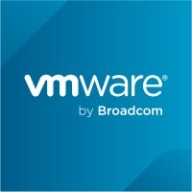

Apache Spark and Spring Boot are key players in the software industry, each serving unique functions. Apache Spark's strong data processing capabilities and Spring Boot's application development simplicity cater to different needs, but Spark's advanced capabilities give it an edge in big data processing.
Features: Apache Spark offers large-scale data processing with low latency, essential for tasks like batch ETL processing and executing machine learning algorithms. Spark SQL and Spark Streaming enhance its data analysis and real-time processing capabilities, making it indispensable for big data applications. Spring Boot, on the other hand, excels in rapid application development with features like microservices support and ease of integration, benefiting developers focused on service scalability and flexibility.
Room for Improvement: Apache Spark users identify a steep learning curve, suggesting a need for better real-time processing efficiency and refined memory management. The complexity of navigating its framework calls for improved user interfaces and comprehensive documentation. Spring Boot could enhance cloud provider integration and streamline security configuration. Better guidelines and tutorials for managing large-scale deployments are in demand.
Ease of Deployment and Customer Service: Apache Spark supports extensive deployment options, from on-premises to cloud environments, but relies heavily on community support, which can delay problem resolution. Spring Boot offers straightforward initial setup and deployment options across cloud and hybrid models. Despite being open-source, Spring Boot receives positive feedback for its support, particularly when combined with professional services.
Pricing and ROI: Both Apache Spark and Spring Boot are attractive due to their open-source nature, eliminating licensing costs. However, Spark's infrastructure needs can lead to higher expenses, especially in cloud scenarios. Users report significant ROI through cost savings and faster processing times. Spring Boot is praised for its cost-effectiveness in rapid application development, with both solutions offering substantial ROI potential due to their time and cost efficiencies.
| Product | Market Share (%) |
|---|---|
| Spring Boot | 38.9% |
| Apache Spark | 8.4% |
| Other | 52.7% |


| Company Size | Count |
|---|---|
| Small Business | 27 |
| Midsize Enterprise | 15 |
| Large Enterprise | 32 |
| Company Size | Count |
|---|---|
| Small Business | 19 |
| Midsize Enterprise | 8 |
| Large Enterprise | 17 |
Spark provides programmers with an application programming interface centered on a data structure called the resilient distributed dataset (RDD), a read-only multiset of data items distributed over a cluster of machines, that is maintained in a fault-tolerant way. It was developed in response to limitations in the MapReduce cluster computing paradigm, which forces a particular linear dataflowstructure on distributed programs: MapReduce programs read input data from disk, map a function across the data, reduce the results of the map, and store reduction results on disk. Spark's RDDs function as a working set for distributed programs that offers a (deliberately) restricted form of distributed shared memory
Spring Boot is a tool that makes developing web applications and microservices with the Java Spring Framework faster and easier, with minimal configuration and setup. By using Spring Boot, you avoid all the manual writing of boilerplate code, annotations, and complex XML configurations. Spring Boot integrates easily with other Spring products and can connect with multiple databases.
How Spring Boot improves Spring Framework
Java Spring Framework is a popular, open-source framework for creating standalone applications that run on the Java Virtual Machine.
Although the Spring Framework is powerful, it still takes significant time and knowledge to configure, set up, and deploy Spring applications. Spring Boot is designed to get developers up and running as quickly as possible, with minimal configuration of Spring Framework with three important capabilities.
Reviews from Real Users
Spring Boot stands out among its competitors for a number of reasons. Two major ones are its flexible integration options and its autoconfiguration feature, which allows users to start developing applications in a minimal amount of time.
A system analyst and team lead at a tech services company writes, “Spring Boot has a very lightweight framework, and you can develop projects within a short time. It's open-source and customizable. It's easy to control, has a very interesting deployment policy, and a very interesting testing policy. It's sophisticated. For data analysis and data mining, you can use a custom API and integrate your application. That's an advanced feature. For data managing and other things, you can get that custom from a third-party API. That is also a free license.”
Randy M., A CEO at Modal Technologies Corporation, writes, “I have found the starter solutions valuable, as well as integration with other products. Spring Security facilitates the handling of standard security measures. The Spring Boot annotations make it easy to handle routing for microservices and to access request and response objects. Other annotations included with Spring Boot enable move away from XML configuration.”
We monitor all Java Frameworks reviews to prevent fraudulent reviews and keep review quality high. We do not post reviews by company employees or direct competitors. We validate each review for authenticity via cross-reference with LinkedIn, and personal follow-up with the reviewer when necessary.